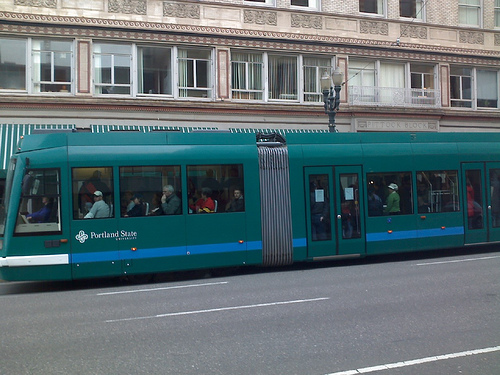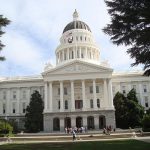Is Portland’s smart growth smarter than Los Angeles’?
A recent study contrasts Portland, long admired as an example of a smart growth city, and Los Angeles, often considered the American epitome of urban sprawl. Authors Hongwei Dong of California State University and Pengyu Zhu of Boise State University define smart growth as “a reaction to urban sprawl” that promotes “compact urban form, orderly land development and less car dependence;” in “Smart Growth in Two Contrastive Metropolitan Areas: A comparison between Portland and Los Angeles,” they also look at how smart growth impacts social inequality.

Portland and Los Angeles: not traditionally rival cities, but a new study finds interesting parallels and points of contrast in their respective smart growth strategies. Image from Jason McHuff.
To compare the two metropolises, the authors developed an index system and time-trend analysis that address transportation, land use, socio-demographic data, and housing, with the goal of demonstrating “the diverse and complex urban landscapes that smart growth policies aim to intervene,” and to “shed light on the impacts of smart growth policies on urban landscapes in two totally different planning systems.”
First, some background about each urban area: Portland has been working actively since the late 1970s to prevent urban sprawl with such developments as an urban growth boundary, to encourage orderly land development, and certain policies, such as financial perks for new urbanist developments. Los Angeles, known for its sprawl, also has smart growth initiatives and is more racially/ethnically diverse than Portland, yet the city’s metropolitan planning organization “lacks real power” in land use and growth management, unlike Portland’s.
Each city has its own growth management policies, as the authors point out, but implementation varies, with Portland’s policies aimed regionally, and Los Angeles’ targeted locally. The study analyzes Los Angeles and Portland’s urban landscapes neighborhood by neighborhood. (The Los Angeles region studied is about eight times larger than the Portland area, and has a population about 11 times greater than that of Portland.)
The study analyzes the neighborhoods based on four main characteristics of smart growth: residential density, mixed land use, mixed housing, non-auto transportation accessibility; and on the two socioeconomic dimensions of income and racial-ethnic diversity.
Some findings are perhaps unsurprising: Portland boasts more diverse land use types, as well as a slightly higher public transit coverage rate and a much higher bike-route coverage rate. But Los Angeles edged out Portland in some areas, such as a higher level of access to personal services, as well as slightly better street connectivity.
So, what are the study’s implications? Neither area “excel[s] in all six smart growth measures: they are at the high ends of some indices but at the low ends of others.” Even Portland cannot claim more than a few neighborhoods that meet all six smart growth standards. Even in smart-growth-centric Portland, where there are higher levels of housing diversity on a neighborhood basis, income diversity is on par with L.A.’s, and its residential areas are much less ethnically/racially diverse.
In America, where “the idea of using certain urban forms to sustain and foster social diversity” has been a significant hallmark of urban planning following World War II, smart growth policy has its place, but it is not a cure-all, claim the authors: “Without critically addressing the social, political and economic forces that have produced the problems [of social inequality], smart growth policies alone will be unlikely to make much substantive or meaningful impact on this front.”
Related Posts
Category: Uncategorized

















